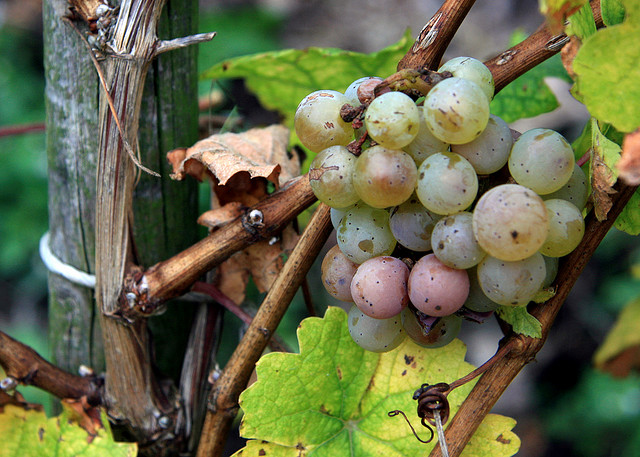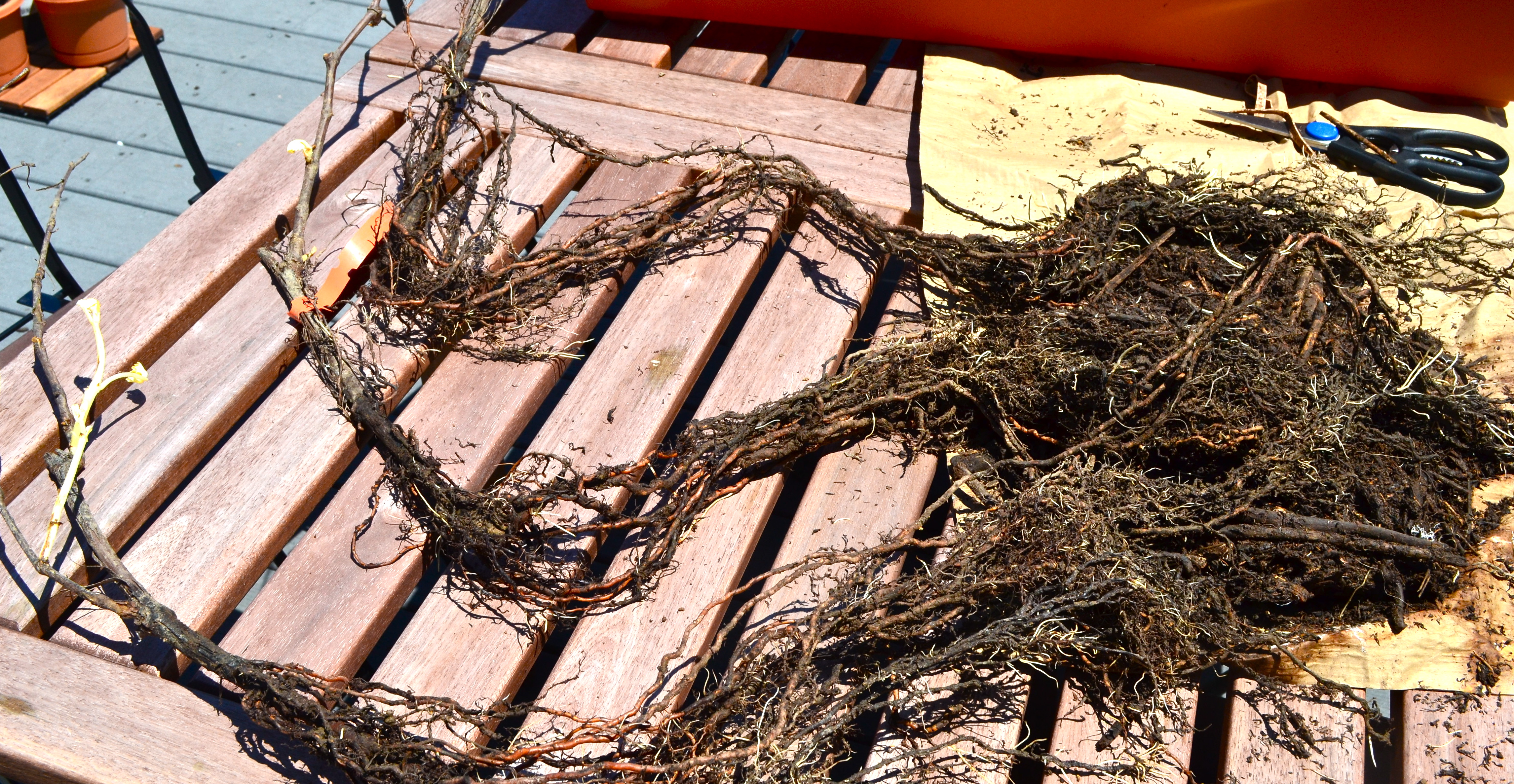 (image)
(image)
I’m going to put this out there — you can feel free to argue, but my gut tells me the “terroir” of potting mix might not lead to the finest wine… That doesn’t mean you can’t go on ahead and try to grow wine grapes on your patio then whip up a batch of whatever you want in your bathtub. It just means that maybe you should consider the other wonders grapes have to offer. Like jelly. Like straight eating off the vine. Like their amazing sweet fall smell that is 100% worth it even if you never get around to eating a single bit of the fruit.
There’s also the fact that grapevines and grapes LOOK AWESOME. Grapevines grow fast (wild grapes climb to the tippy top of trees) and their wood is so gnarled and ancient-looking and their leaves are so pretty with their heart shapes and serrated edges. And then there are the jewels of the grapes themselves, blue-black or green fading into pink. Oh my goodness are they ever lovely. It’s a fruit worthy of gods, even if it doesn’t lead to a bacchanal. Typing all this is getting me really worked up about grapes! I need to take a little break for swooning.
Okay, I’m back. Basically, what I’m saying is, “We can do this, container gardeners!” Maybe we’re not going to become fancy vintners on our balconies, but the rewards are sweet nonetheless. So, wanna know how to grow grapes?
Let’s start with planting the vines.
Planting:
I planted some grapes on my patio this summer. They arrived looking like witchy alien babies with shockingly robust tentacle networks. Take a look:
 Point is, that’s a lot of root. You have to plant accordingly. No puny pots. You want to be able to spread the roots and cover them completely with soil. For grapevines planted in the soil, six to eight feet is the recommended spacing between plants. If you’re growing your grapes in a pot that means: one plant per planter. Unless you’re telling me you have a sixteen foot planter, in which case godbless. Also, put the planter in a sunny spot.
Point is, that’s a lot of root. You have to plant accordingly. No puny pots. You want to be able to spread the roots and cover them completely with soil. For grapevines planted in the soil, six to eight feet is the recommended spacing between plants. If you’re growing your grapes in a pot that means: one plant per planter. Unless you’re telling me you have a sixteen foot planter, in which case godbless. Also, put the planter in a sunny spot.
Training and Pruning:
Grapevines need support. They don’t want to grow on the ground. If you don’t give them something to cling to and climb, they’ll revolt by growing poorly and/or turning diseased. So give them some support! A pretty trellis works quite nicely. Some utilitarian stakes with wire strung between them will do the trick as well. “Training” is just a fancy word for tying the vines to whatever supports you’re giving them.
But training alone isn’t enough. Grapevines also need pruning, which sounds a lot scarier than it is. The deal is that unless you prune them, grapevines get very dense, the fruit quality goes down, and susceptibility to diseases goes way up. But you only have to do it once a year! And it’s not nearly as big of a deal for table grapes as it is for wine grapes. So don’t freak out at the “P” word!
Here are the basic rules of thumb:
- Prune when the grapevines are dormant. February or March are good months.
- Remove 85 to 90% of last year’s wood.
 (images via University of Minnesota Extension)
(images via University of Minnesota Extension)
Looking cool, right?
Patience:
Remember how I told you grapevines grow fast? It’s true, they do! But even with vigorous vine growth, it takes them a while to be mature enough to develop fruit. In fact—brace yourselves–it can take up to three years. In the meantime, you get this gorgeous plant, so it’s not all bad news. But, yes, getting a really good crop of grapes takes a longer term investment. Because they grow over the course of many years, it’s particularly important to pick a variety that can handle the winters where you live (check back for the post on grape varieties, coming next week). Also important, you need to remember that winter in a pot is harsher than winter in the ground (aboveground roots get a lot colder), so you’ll have to account for that as well.
But all that said, the fact remains — grapes: TOTALLY WORTH IT.
Tags: concord grapes, grapes, grapevines, how to grow grapes, table grapes